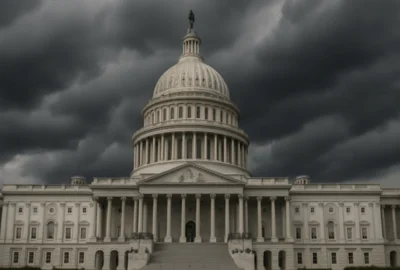When ocean temperatures rise, corals may bleach, losing their zooxanthellae and color pigment. If heat stress events are particularly long and hot, these bleached corals die because they cannot recover their zooxanthellae. These events and coral bleaching are becoming more frequent. Scientists at the Pacific Islands Fisheries Science Center are tracking the health of coral communities before, during, and after major coral bleaching events.
During an El Niño-induced heat stress event in 2015–2016, Dr. Bernardo Vargas-Angel and his team documented more than 98 percent coral die-off at the uninhabited reefs of Jarvis Island. The reef community is located in the Pacific Remote Islands Marine National Monument. The coral loss was catastrophic. The scientists and their management partners wondered if the reefs at Jarvis would naturally bounce back from such a massive mortality event. What the team found offers a sign of hope—the benthic reef community at Jarvis is changing!
Bleached coral colonies like this one were abundant around Jarvis Island after the mass bleaching event. Photo: NOAA Fisheries.
Our coral reef scientists returned to Jarvis to measure changes in the benthic communities for 3 years following the mass mortality event. We observed significant shifts in the benthic community each year. Immediately after the corals died, algae grew over much of the reef structure. This was temporary—likely due to the many herbivorous reef fish that graze on algae. We observed their abundance actually increase after the bleaching event.
Calcifiers such as crustose coralline algae and Halimeda replaced algae on the reef. Crustose coralline algae can act as cement, locking the complex reef framework into place while corals slowly recover. Coral larvae settle and attach to surfaces from the water column. They actually prefer crustose coralline algae—meaning Jarvis’s reefs now offer a hospitable “landing pad” for baby corals. By 2018, we detected indications of coral recovery on the reef, including more abundant young corals and more stress-tolerant corals like Pavona. However, densities of Montipora and Pocillopora corals remain low, suggesting recovery will be slow for these formerly dominant groups at Jarvis.
A massive coral colony is almost completely bleached following the heat-stress event at Jarvis in 2015-16. It is surrounded by coral reef structure covered in crustose coralline algae, which can provide great habitat for young coral recruits. Photo: NOAA Fisheries
The ability of a reef community to naturally rebound is important. These early changes in the 3 years following a mass bleaching event make us cautiously optimistic for Jarvis Island’s coral reefs. In the coming years, we will continue to monitor this remote reef system to assess whether corals can rebound fully. This will allow us to prepare for future climate-related disturbance events at this isolated reef ecosystem.
Original source can be found here.









